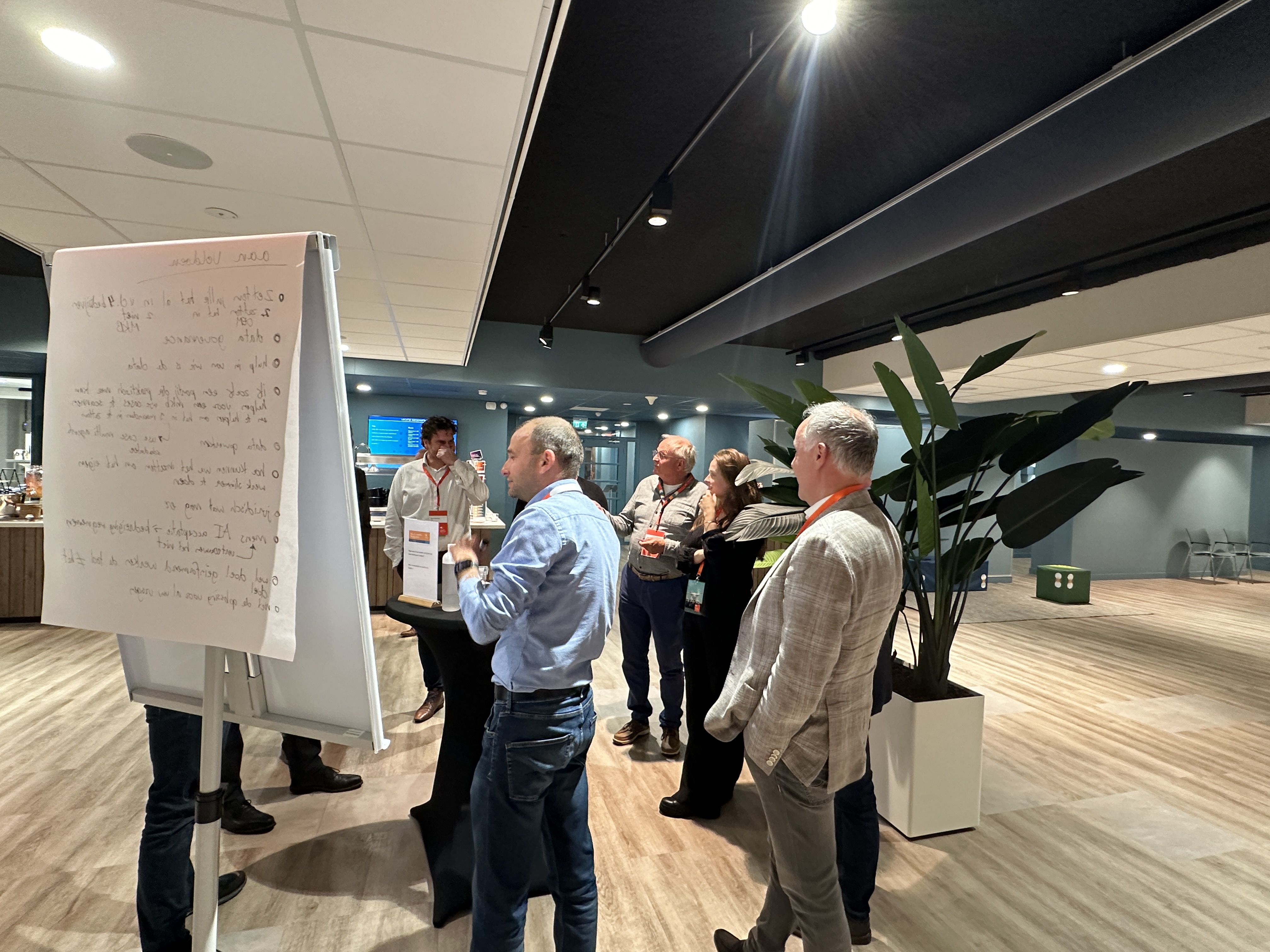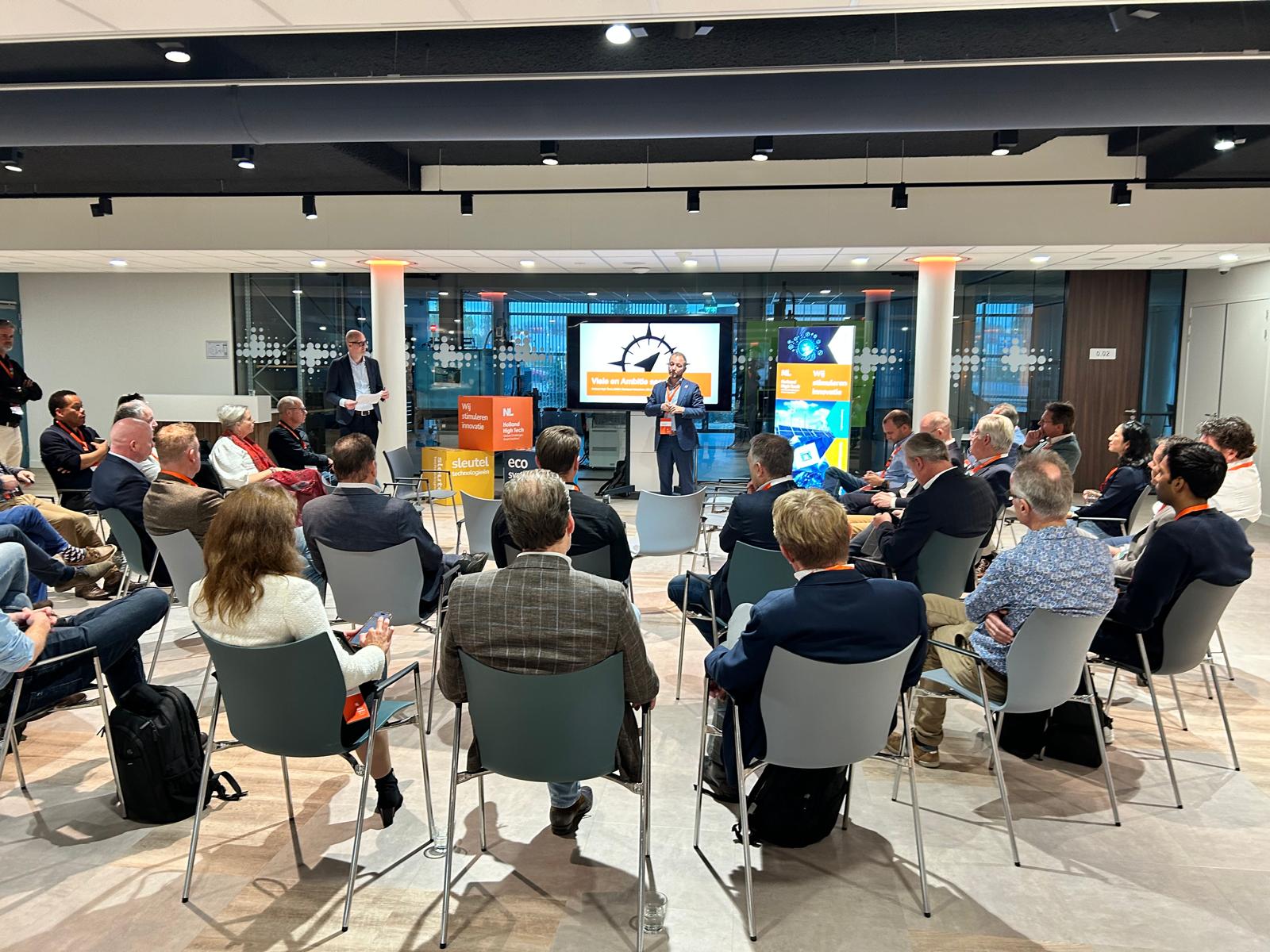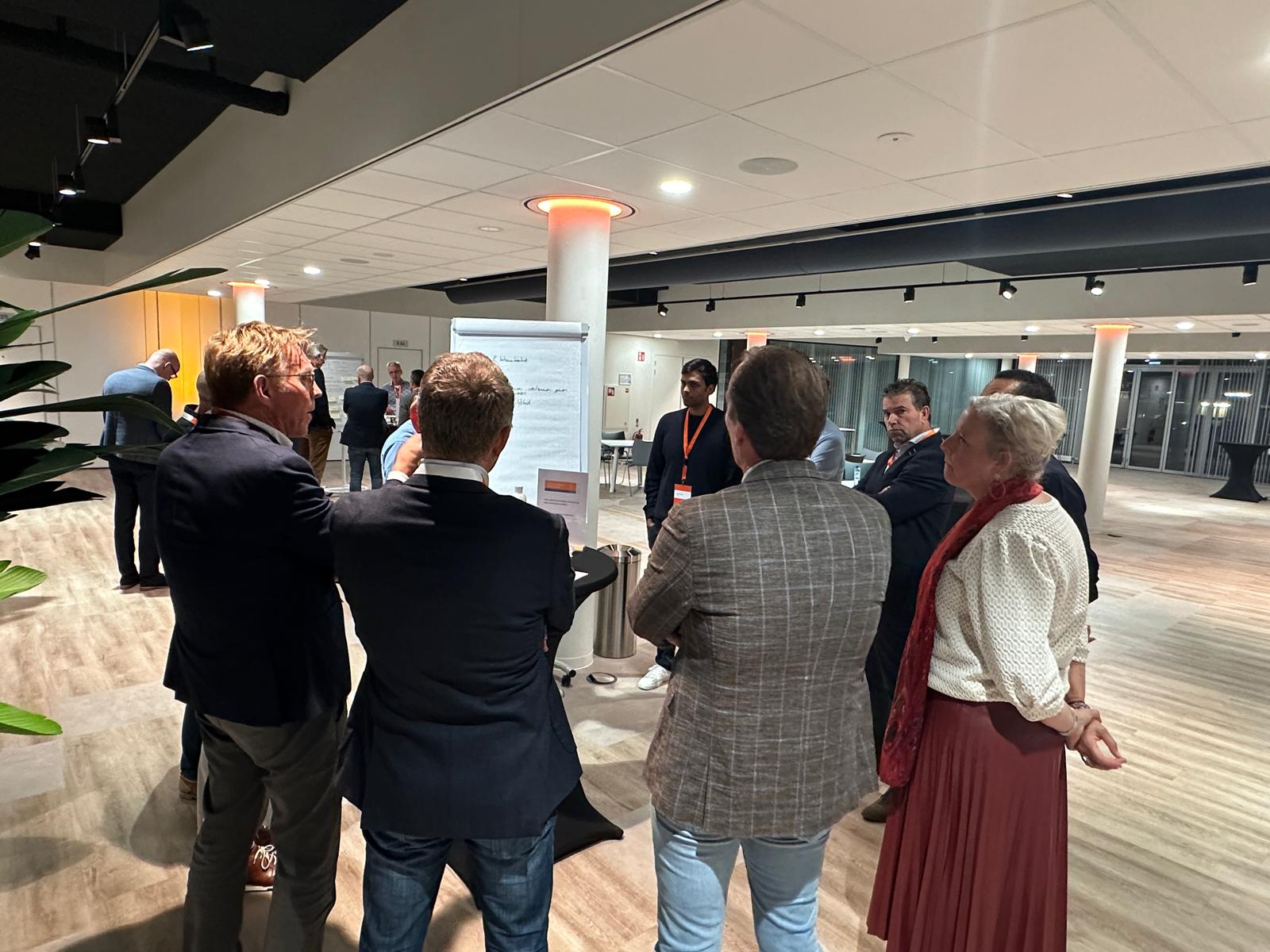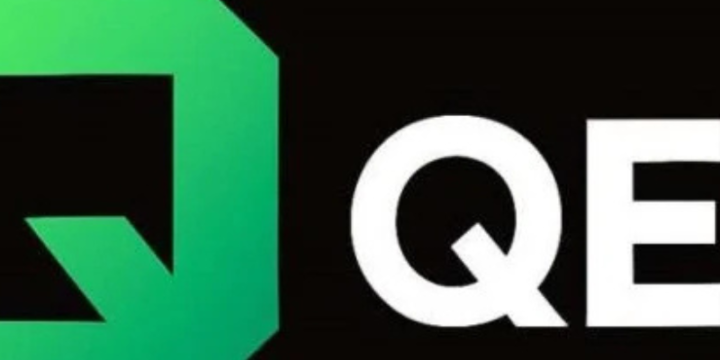The future of high-tech: AI as an indispensable partner
The high-tech sector can benefit greatly from artificial intelligence (AI) by using the technology for production processes. Before this can happen, several obstacles must be overcome, concluded speakers and participants during the third Vision & Ambition Session 2024. This took place at the end of October at our partner Mikrocentrum in Veldhoven. We organized this meeting together with our partners Brabant Development Agency (BOM) and Brainport Industries.
Applying artificial intelligence to production processes offers so many advantages that they are almost there for the taking: minimizing set-up times, optimizing production schedules and signaling deviations in the process flow in order to be able to tackle problems at an early stage. These are just three examples that Ivo Adan, professor of Manufacturing Networks at TU Eindhoven, mentions during the Vision & Ambition Session. This does not only concern the use of natural language models (large language models), which have become so well-known in recent times due to the popularity of ChatGPT. The more classic forms of AI such as decision trees and evolutionary algorithms can also help to make business processes more efficient.
This improvement is urgently needed. Not only are we increasingly confronted with more complex devices, but the methods for developing and producing these devices are also becoming increasingly complex, says Jacco Wesselius, Business Director Embedded Systems Innovation at TNO-ESI. “We integrate systems into a ‘system of systems’ and that increases the complexity. We are good at building devices that are among the best in the world. But the rest of the world is not standing still,” he warns. To stay ahead of the competition, innovation must therefore accelerate. Simply deploying more people is not a solution, if only because it is difficult to find sufficient talent. AI can play a role in this, for example in achieving more efficient system development. “If we say that in ten years, productivity in engineering must at least double, how do you do that?”, Wesselius asks his audience. “Then you have to think about digital engineering assistants. Assistants who help the engineer to do his or her work more efficiently and effectively.”
Changing role of engineers
Wesselius uses various projects to show how the work of engineers can be simplified, so that ultimately people with less in-depth knowledge – citizen engineers and citizen code maintainers – can also take over some of the work of the specialists. “I don’t believe that everyone will soon be able to build a waver scanner with ChatGPT. But that you can make great strides in this area? Absolutely!” It does mean that engineers in the company are prepared to adapt their working methods so that they can deal with the new technology. The new roles of citizen developers must also be properly embedded in the organization. Especially for small and medium-sized companies (SMEs), the use of tools such as ChatGPT offers opportunities to let people without in-depth programming knowledge build software and develop their own AI solutions.
Data in order
For the approach with AI to be successful, sufficient good data about the production processes must be available. This is where things often go wrong. “How great would it be if we could roll out an easy-to-implement data infrastructure in the factory,” sighs one of the participants during the brainstorming sessions. Much production equipment is still quite closed and if they are open, they often produce data in an unusable form. ‘How do you turn that data into information?’ and ‘How do you link it all together?’ are current questions for many SMEs. Developing standards is a good answer to this, but easier said than done. Because how do you start? Should this be a global initiative that takes a very long time, or does it make more sense to quickly switch closer to home with a limited number of companies? Questions that cannot be answered in a ready-made way.
Help with investments
Innovation requires major investments, especially for SMEs. More collaboration and use of the available subsidy schemes can help to overcome these hurdles. Gerard van der Zon, operational director of Holland High Tech (HHT), points to interesting collaboration and financing options such as KIEM HighTech, which was announced together with Regieorgaan SIA, the HTSM call, which was announced together with NWO, and the (new!) SME call that opens in December. There will also be an Open Call in 2025 for companies looking for co-financing for their innovation project. More information can always be found on this website.
The participants in the brainstorming sessions also see advantages for SMEs to collaborate in the field of innovation in order to be able to share the costs. Industry associations can help to set up and supervise such collaboration projects.
Assign responsibility for AI implementation
Innovation is an important step to stay ahead of the competition, but even more important is to ultimately apply the results of pilot projects successfully. Adan works closely with the business community from TU Eindhoven to conduct practical research into the challenges of implementing AI applications. For example, a series of PhD students have already developed solutions for various large and small companies. Unfortunately, it often remains a proof-of-concept. "Then the students develop very nice ideas, they show that it works, but in the end they are often not implemented," he notes. He sees many reasons for the lack of success. It often comes down to a lack of capacity to continue the project, or there are organizational reasons. These problems arise because the organization has not properly assigned responsibility for the entire project, several participants noted during the discussion. Someone needs to be appointed, a 'systems thinker' who understands both IT and operational technology and can oversee AI projects.
AI offers many opportunities for the high-tech sector, but it is not that easy to make the possibilities a success in practice. Collaborating with other companies and looking for financing instruments helps to smooth the path there. However, a first task is to properly arrange the support and continuity of the changes within your own organization.
The Vision & Ambition Sessions
The world of innovation and high-tech is in full swing and the Netherlands is facing major challenges and opportunities. As Holland High Tech, top sector High Tech Systems & Materials, we look to the future: to the transitions, the innovations that contribute to this and the opportunities for our sector. Our Vision & Ambition Sessions literally stand for 'stimulating innovation'. Together with the leaders in high-tech and innovation, we tackle the major social challenges. We do this per region. In this way, we increase the impact of innovation together.
Photos Vision & Ambition Session SOUTH








